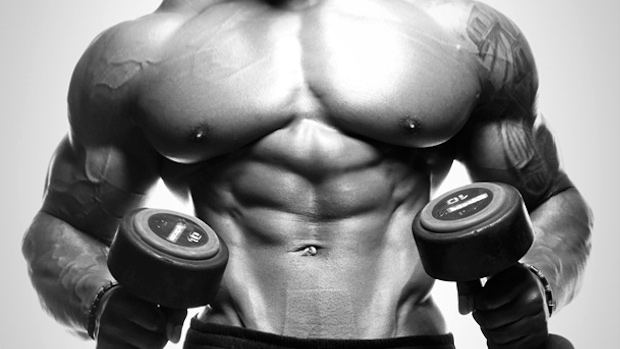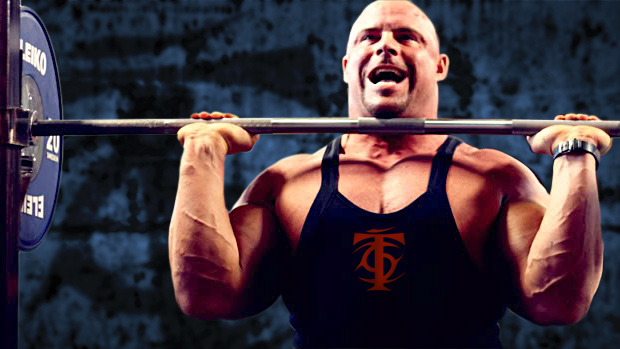Here's what you need to know...
- Training economy is huge. You should always strive to get the greatest effect out of the smallest energy expenditure.
- Sequencing your workouts so each exercise feeds into the next is an effective means of reducing or eliminating warm-up sets.
- Methods include reducing the total range of motion, doing mechanical advantage sets, and adding "body english."
I'm very big on training economy. Getting the most benefit from the resources you expend is hugely important. For years I've used an amazing tactic for streamlining my workouts. I call it exercise stacking, and it's one of the best possible ways to empower your training time.
In short, exercise stacking refers to ordering your workouts in such a way that each movement "feeds" off the one it follows. This drastically reduces (and in many cases eliminates) the need for warm-up sets on all but your first exercise of the day.
I first came up with this after spending several years competing as a master's level Olympic-style weightlifter. In the discipline of weightlifting, athletes typically move seamlessly from one exercise to the other by ordering them in like groupings.
For example, a weightlifter might perform power cleans (so termed because in a "power" clean, the weight is still light enough to allow the athlete to receive or catch the bar on the shoulders without needing to fall into a deep squat position), continuously adding weight on each set, until, at some point, the next weight increase forces him to catch the weight in a deep squat position, which of course, makes it a "full" clean.
After full cleans have been completed, the athlete might shift to front squats, which will require no warm-up sets at all, since they're virtually identical to the front squat position used to receive a heavy clean.
So if the weightlifter finished his full cleans with 275 pounds, he can start his front squats at that same weight or even heavier. This procedure has a natural order to it that really conserves time and energy during workouts. Before long, I started looking for ways to apply it to non-weightlifting workouts, and the results have been very satisfying.
Here's how you can employ exercise stacking in your own workouts.
The Pull Stack
- Deficit Pulls
- Conventional Deadlifts
- Pin Or Block Pulls
My competitive powerlifters often use this combination, and I've seen it used in training videos of Mark Bell's Supertraining gym in California.
In the above sequence you can apportion the volume between these three exercises any way you deem fit. So you might, for example, do most of your work on deficits, then a few sets of conventional pulls from the floor, and then cap it off by working up to a few progressively heavier singles on pin pulls from the rack.

The Press Stack
- Military Press
- Push Press
- Push Jerk
This is another from the sport of weightlifting, but it's a great way to structure your vertical pressing sessions. Simply start off with strict barbell military presses and when you get to the point where the weight becomes a bit too heavy for a strict press, simply add some leg drive to increase your total power output.
Finally (and assuming you have the skill of course), you can transition to a push press or even a split-jerk to further your ability to lift even heavier weights.
The Bench Stack
- Paused Bench Press
- Touch-And-Go Bench Press
- Board Press
Powerlifters often cap off a strict bench session (where every rep is paused at the chest, as required by most powerlifting federations) with a few sets of looser, easier, touch-and-go benches presses.
However, as a possible third exercise in the stack you can next shift to board presses, where even heavier weights are possible due to the newly reduced range of motion.
The Pull-Up Stack
- Strict Pull-up
- Kipping Pull-up
Here's my admittedly modest contribution for the Crossfit crowd. Incidentally, I have no issues with kipping pull-ups whatsoever, provided you perform them properly. After all, in the sports of weightlifting and powerlifting, our goal is to find the easiest, most efficient way to lift big weights. Kipping pull-ups fall into this same category.
In this example, you simply do whatever work you have planned on strict pull-ups, and then follow it with some kips, which are of course, significantly easier.
In essence this might be termed a mechanical drop-set. Whatever you call it, it's a great way to integrate maximal strength and hypertrophy stimuli in one integrated session.
The Triceps Stack
- Flat Lying Triceps Extension
- California Press
I learned this idea from Jerry Telle. It's really two different exercises that follow each other in the same set. You start off performing basic lying triceps extensions (whether with a bar or with dumbbells) and then, when fatigue prevents your ability to complete any additional concentric reps, simply press the weight from your chest concentrically, and then lower the weight like a triceps extension eccentrically.
Since you're stronger eccentrically than you are concentrically, this maneuver will allow you to complete additional growth-producing reps.
Endless Applications
With a bit of imagination, you'll no doubt come up with all sorts of ways to apply exercise stacks in your own training. Think in terms of adding mechanical advantage to your second and/or third exercises, either by reducing the total range of motion, adding body english, or adding supportive equipment such as a weight belt or lifting straps.





